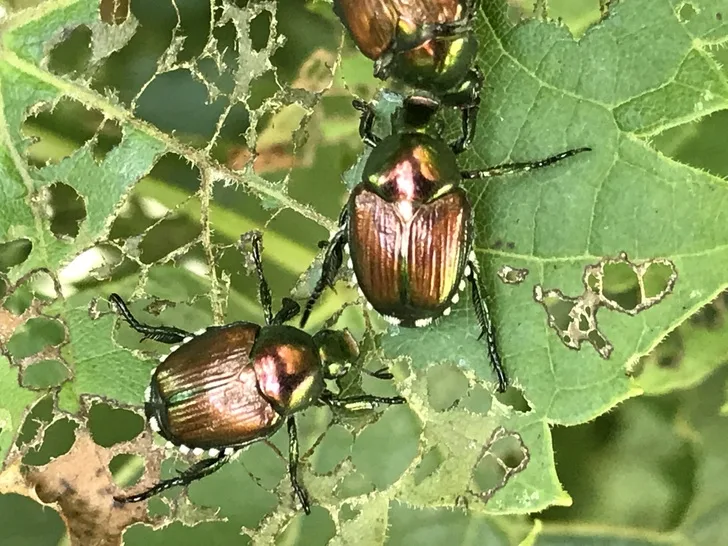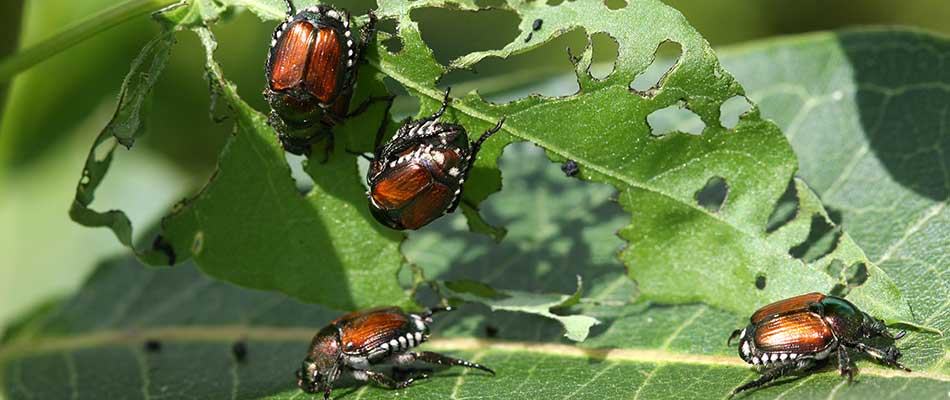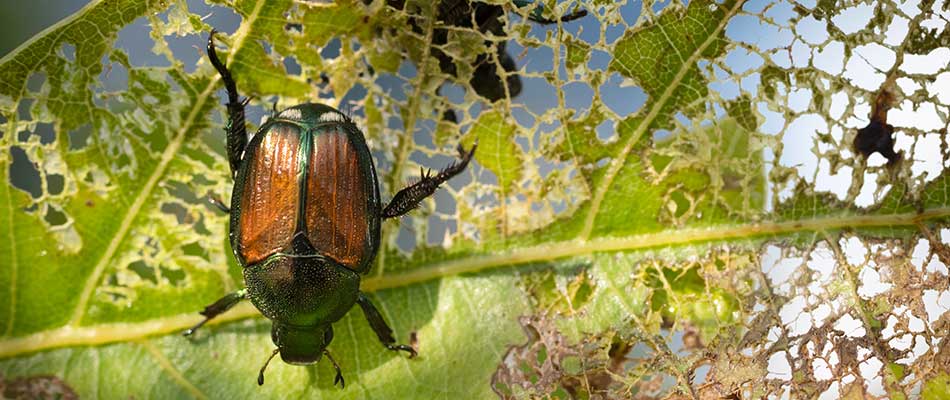japanese beetle life cycle iowa
3 Areas of healthy sunny well-irrigated and well-maintained lawn grasses are prime targets. These eggs hatch late July into August and are small and close to the soil surface.

Japanese Beetle Control In Des Moines West Des Moines Ankeny Ia A Lawn Landscape
Life cycle of Japanese beetles.

. Japanese beetles are often found in field edges or areas of delayed growth. In the spring around March or April the grub will. Japanese beetles go through multiple stages in their life cycle.
In Iowa adult beetles emerge in mid-June through July. Iowa Missouri and Nebraska. This is when they are easiest to control.
Adult female beetles lay eggs in the soil in early June. Milky spore disease builds up in turf slowly over 2 to 4 years as grubs ingest the spores become infected and die each releasing 12 billion spores back into the soil. They overwinter deep in the soil and resurface again in spring when soil temperatures rise to feed for another 3 to 4 weeks before emerging as adult Japanese beetles.
The immature larvae or grubs stay close to the soils surface and feed on grass roots. Life Cycle of the Japanese Beetle. The grub to take on a characteristic milky appearance.
You can use an organic product called Milky Spore. Its not easy to spot the Japanese beetle at first. Studies with Japanese beetles under captivity have shown variations as wide as nine to 74 days in males and 17 to 105 days in females.
Late June through August or September. Tachinid flies some birds raccoons skunks etc. The adults mate and females lay their eggs in the soil in grassy areas.
Most of the beetles life is spent underground only emerging in the adult phase we all know and loathe. The life cycle of the Japanese Beetles consists of four stages of development called complete metamorphosis. Japanese beetle life cycle.
Japanese beetle eggs hatch during midsummer. Japanese beetles mate and feed in groups. In the summer around June or July full-grown beetles will lay eggs.
Milky spore disease can suppress the development of large beetle populations. During a two- to three-week period female beetles repeatedly tunnel a few inches into the ground and lay up to 60 eggs each. Adult beetles are metallic green with brown wings approximately 57 mm wide and 811 mm long Figure 1.
These grubs will begin to eat the roots of plants and overwinter as a grub. Please enter a valid location. The grubs are C-shaped and approximately 125 inches when fully grown.
Ad Low Prices on japanese beetle trap. The most susceptible life stage of the Japanese beetle is the newly hatched grub in the soil. As its name implies Japanese beetles of the scarab beetle family are indigenous to Japan.
Adult female beetles lay eggs in the soil in early June. 50131 - Johnston Iowa. Shortly after the egg will hatch and give rise to grubs.
After the egg hatches in summer the grub feeds on roots until the following summer when it emerges as a shiny beetle. Leaves of plants such as birch canna crape myrtles grapes hops linden trees rose bushes etc. They overwinter deep in the soil and resurface again in spring when soil temperatures rise to feed for another 3 to 4 weeks before emerging as adult Japanese beetles.
The generally accepted range is 30 to 45 days Fleming 1972. Management of Japanese Beetle. The eggs hatch in about 2 weeks and the developing Japanese beetle larvae white grubs feed on organic matter and grass roots until late fall.
Thats because much of its life cycle takes place underground. The grubs of these pests will feed on the roots of the grass and can cause them to thin out. Japanese beetle have one generation per year Figure 2.
Japanese beetle are distinguished from native beetles by the presence of five pairs of white tufts on their abdominal sides and two additional tufts on the abdomen tip. The Japanese beetle has four stages in its life cycle two of which can be destructive to your lawn and garden. Free Shipping on Qualified Orders.
Stage 1 eggs Stage 2 larva instar I II III Stage 3 pupa chrysalis Stage 4 adults. Life Cycle Japanese beetles have one generation per year in Iowa Fig. Corn soybean ornamentals fruit trees grapes weeds.
Here are the stages in the lifecycle of a Japanese beetle. Look the life cycle of the Japanese beetle is much like the cycle of many other beetles. Life cycle of Japanese beetles.
The life of adult beetles is relatively short under high temperatures and long under low temperatures Fleming 1972. Japanese beetles overwinter in the soil and as soil temperatures warm larvae move closer to the surface and pupate.

Japanese Beetles Emerging In Southern Iowa Integrated Crop Management

How To Prevent Japanese Beetles Lawn Care Blog Lawn Love

Japanese Beetles Popillia Japonica Eating A Physalis Leaf Iowa Usa Stock Photo Alamy

Japanese Beetles Expanding Range In Iowa Integrated Crop Management

10 Ways To Get Rid Of Japanese Beetles Naturally

Japanese Beetles Emerging In Southern Iowa Integrated Crop Management

The Japanese Beetle Has Reached Its Peak Population In Places Across Iowa While Some Areas Of The State Have Not Seen The Bee Japanese Beetles Beetle Japanese

Iowa Corn Soybeans Japanese Beetles Emerging In Southern Areas Agfax

Signs Of Japanese Beetle Infestations Shades Of Green Lawn Landscape

Crop Insects To Watch For In June Iowa Agribusiness Network

Japanese Beetles Meadows Farms

Japanese Beetle Control In Des Moines West Des Moines Ankeny Ia A Lawn Landscape

Is It Japanese Beetle In The Field Or Something Else Integrated Crop Management

Japanese Beetle Control In Des Moines West Des Moines Ankeny Ia A Lawn Landscape

Japanese Beetles Begin Emergence Integrated Crop Management

Japanese Beetle Food Preferences Horticulture And Home Pest News
Where Have All The Beetles Gone Homegrown Iowan

Japanese Beetle Adult Emergence Begins In Southern Iowa Integrated Crop Management
